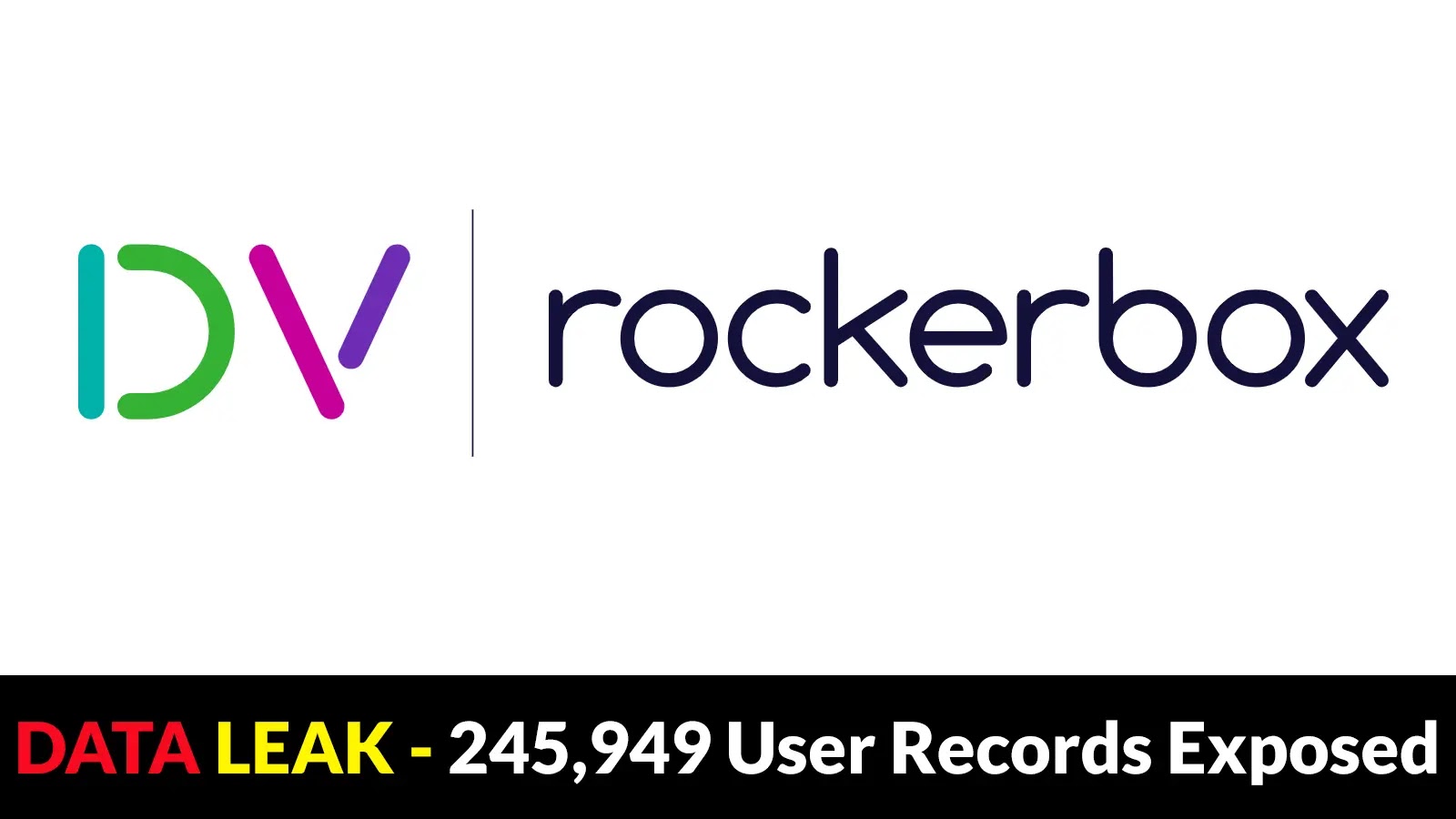
Rockerbox Data Leak – 245,949 User Records Exposed Including SSNs and Driver’s Licenses
Rockerbox Data Leak: 245,949 Sensitive Records Exposed – A Deep Dive into Cloud Misconfiguration Risks
In the relentless current of data breaches, a new incident has surfaced, casting a stark light on the persistent dangers of misconfigured cloud environments. Early July 2025 saw the emergence of a significant threat: a massive, unencrypted cloud repository, totaling 286.9 GB, openly indexed on the internet. This alarming discovery contained 245,949 highly sensitive records, traced to Rockerbox, a Dallas-based tax-credit consultancy. The implications of this exposure for individuals whose data has been compromised are severe, ranging from identity theft to financial fraud. This post dissects the Rockerbox data leak, underscoring the critical need for robust cloud security practices.
The Anatomy of the Rockerbox Breach
The Rockerbox data leak did not stem from a sophisticated cyberattack but rather from a fundamental security oversight: an unencrypted cloud storage repository left openly accessible. This common vulnerability, often a result of misconfiguration, allowed anyone with an internet connection to view and potentially download the comprehensive dataset. The sheer volume and nature of the exposed information are particularly concerning.
- Scope of Exposure: 245,949 user records.
- Volume: 286.9 GB of sensitive data.
- Discovery Date: Early July 2025.
- Root Cause: Unencrypted cloud repository openly indexed on the internet.
- Affected Entity: Rockerbox, a Dallas-based tax-credit consultancy.
What Data Was Compromised?
The contents of the exposed Rockerbox repository paint a grim picture, encompassing categories of personally identifiable information (PII) that are highly valuable to malicious actors. This kind of data can be leveraged for a multitude of fraudulent activities, making the affected individuals prime targets for identity theft.
The compromised data included, but was not limited to:
- Full Names
- Social Security Numbers (SSNs)
- Driver’s Licenses
- Dates of Birth
- DD214 Military Discharge Forms
- Payroll Tax Information
- Financial Records
- Contact Information (Physical Addresses, Email Addresses, Phone Numbers)
The presence of SSNs, driver’s licenses, and military discharge forms is particularly alarming, as these pieces of information are cornerstone elements for creating synthetic identities, opening fraudulent accounts, or committing tax fraud.
The Broader Implications: Cloud Security Misconfigurations
The Rockerbox incident serves as a potent reminder of the widespread problem of cloud security misconfigurations. While cloud providers offer robust security features, organizations are ultimately responsible for configuring their cloud environments securely. This breach is not attributed to a specific vulnerability like CVE-2021-44228 (Log4Shell) or CVE-2017-5638 (Apache Struts), but rather to a fundamental lapse in implementing best security practices for data storage in the cloud.
Common misconfiguration risks include:
- Open S3 Buckets: As likely the case with Rockerbox, misconfigured AWS S3 buckets (or similar storage in other cloud providers) exposed to the public internet without proper access controls or encryption.
- Weak Access Controls: Overly permissive identity and access management (IAM) policies.
- Lack of Encryption: Storing sensitive data without encryption at rest or in transit.
- Unpatched Systems: While less relevant to this specific incident, unpatched operating systems or applications within cloud instances remain a significant risk.
- Default Configurations: Failing to change default usernames, passwords, or security settings.
Remediation Actions and Prevention Strategies
For organizations, preventing similar incidents requires a proactive and comprehensive approach to cloud security. For individuals potentially affected by this or similar breaches, immediate action is crucial to mitigate potential harm.
For Organizations:
To prevent similar cloud data leaks, organizations should implement the following:
- Principle of Least Privilege: Granting users and services only the minimum permissions necessary to perform their functions.
- Regular Security Audits: Conduct frequent audits of cloud configurations and access policies. Specialized tools can automate this process.
- Data Encryption: Ensure all sensitive data is encrypted both at rest and in transit. This is a fundamental layer of defense.
- Automated Scanning: Utilize cloud security posture management (CSPM) tools to continuously monitor for misconfigurations and compliance violations.
- Employee Training: Educate staff on secure cloud practices and the importance of data handling protocols.
- Incident Response Plan: Develop and regularly test a robust incident response plan to quickly address security incidents.
- Logging and Monitoring: Implement comprehensive logging and monitoring across all cloud resources to detect suspicious activity.
For Individuals:
If you believe your data may have been part of the Rockerbox leak or any other data breach:
- Monitor Financial Statements: Regularly review bank and credit card statements for any unusual activity.
- Freeze or Lock Credit: Consider placing a credit freeze or fraud alert with major credit bureaus (Equifax, Experian, TransUnion).
- Change Passwords: Update passwords for all online accounts, especially those related to financial and government services. Use strong, unique passwords.
- Enable Multi-Factor Authentication (MFA): Activate MFA wherever possible for an added layer of security.
- Be Wary of Phishing: Exercise extreme caution with unsolicited emails, calls, or texts, as threat actors often use leaked data for targeted phishing campaigns.
- Review Credit Reports: Obtain free copies of your credit report from each of the three major credit bureaus annually to check for unauthorized accounts.
Tools for Cloud Security Posture Management
Proactive security requires robust tooling. Here are some categories of tools vital for managing cloud security posture and preventing misconfigurations:
| Tool Category | Purpose | Examples |
|---|---|---|
| Cloud Security Posture Management (CSPM) | Automated identification and remediation of cloud infrastructure misconfigurations | Palo Alto Networks Prisma Cloud, Wiz, Orca Security, Lacework |
| Cloud Workload Protection Platform (CWPP) | Protecting workloads (VMs, containers, serverless functions) across cloud environments | CrowdStrike Falcon, Microsoft Defender for Cloud, Aqua Security |
| Cloud Identity & Access Management (IAM) Tools | Ensuring least privilege and managing access to cloud resources | AWS IAM Access Analyzer, Azure AD Identity Protection, Okta |
| Data Loss Prevention (DLP) | Preventing sensitive data from leaving defined boundaries | Symantec DLP, Forcepoint DLP, Microsoft Purview |
Conclusion
The Rockerbox data leak underscores a persistent and significant challenge in today’s digital landscape: the critical need for meticulous cloud security practices. This incident, born from an unencrypted and openly indexed cloud repository, exposed nearly a quarter-million sensitive records. It serves as a compelling case study on the tangible risks associated with cloud misconfigurations. Organizations must treat cloud security with the utmost priority, implementing rigorous policies, leveraging automated tools, and fostering a culture of security awareness. For individuals, vigilance and proactive steps are paramount to safeguarding personal information in an era defined by continuous data exposure. The integrity of our digital identities hinges on both diligent corporate security and informed personal defense.





